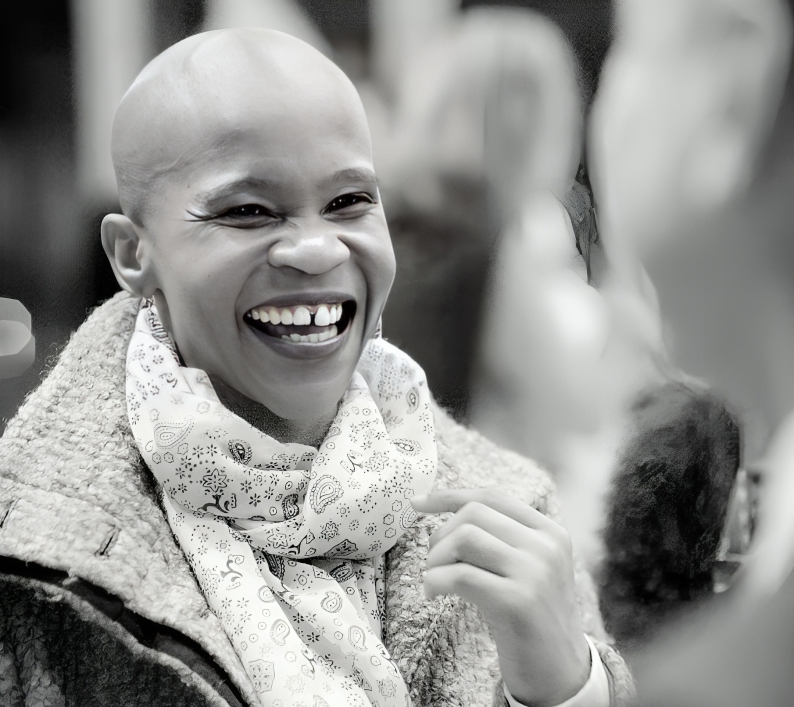At a Glance
- Dada Masilo redefined contemporary dance by blending classical ballet with African traditions, transforming iconic works like Romeo and Juliet and Swan Lake.
- Masilo’s bold reimaginings of classical ballets, such as Giselle and Carmen, earned international acclaim and established her as a trailblazing choreographer.
- A recipient of numerous awards, including a Bessie nomination, Masilo’s legacy continues to inspire new generations of dancers and choreographers worldwide.
Dada Masilo, the Soweto-born South African dancer and choreographer, was a trailblazer whose innovative fusion of classical ballet and African dance reshaped the world of contemporary performance.
Known for her bold reinterpretations of classic ballets, she dismantled traditional European forms to create electrifying new genres that celebrated free expression and cultural fusion. Her passing on Dec. 29, just two months shy of her 40th birthday, marks a profound loss for the South African dance community, where she was a transformative figure.
Masilo’s journey began at age 11 at The Dance Factory, and by 19, she was accepted into the renowned Performing Arts Research and Training Studios (PARTS) in Brussels. Initially focused on dance, her time in Europe led her to embrace choreography—a pivot that would define her artistic trajectory. Reflecting on this shift, she once said, “At P.A.R.T.S., they forced us to choreograph, and after my first solo, I realized I could do this.” Frustrated by a lack of opportunities for her vision in Johannesburg, she forged her own path.
Upon returning to South Africa, Masilo brought a fresh, vibrant energy to the local dance scene. Her groundbreaking reimagining of Romeo and Juliet (2008) and subsequent works like Carmen (2009) and Swan Lake (2010) earned her the Standard Bank Young Artist Award for Dance. Her fearless engagement with taboo subjects, blending humor and insight, won her wide acclaim. In 2017, she premiered Giselle at Oslo’s Dansenshus, adding to her growing reputation as a boundary-pushing choreographer.
Masilo’s works toured extensively across Europe, North America, and Asia, securing her place in the international dance community. She also collaborated with South African artist William Kentridge in his Refuse the Hour. A recipient of numerous accolades, including a Bessie Award nomination and the Danza&Danza Award for Best Performance for Giselle, Masilo’s legacy as one of Africa’s brightest stars endures. Her work continues to inspire new generations of dancers and choreographers. Below are five of her most defining performances:
1. Romeo and Juliet, National Arts Festival, Makhanda, South Africa, 2008
Masilo’s Romeo and Juliet captivated sold-out audiences at the National Arts Festival, Makhanda, in 2008. The performance blended classic and modern interpretations of love, death, and reconciliation, drawing from popular culture while staying true to the essence of the classical story. Choreography assistance from PJ Sabbagha and Gregory Maqoma, combined with a diverse musical selection, enhanced the piece’s emotional depth. As Juliet, Masilo’s portrayal was lauded for its raw, graphic commitment and for breathing new life into the role.
2. The Bitter End of Rosemary, Düsseldorf, Germany, 2011
In 2011, Masilo took the international dance scene by storm with The Bitter End of Rosemary, a performance that pushed the boundaries of traditional dance. Based on Ophelia from Shakespeare’s Hamlet, the performance was daring and iconoclastic, as Masilo boldly performed the dance in the nude. This powerful, unflinching artistic expression captivated audiences, affirming her commitment to authenticity and vulnerability in her re-interpretations of classical works.
3. Swan Lake, Lyon Dance Biennial, France, 2012
Masilo’s 2012 Swan Lake reinvented the classic by blending African tribal dance with classical ballet, creating a fresh, politically charged version that challenged traditional notions of ballet. With a company of 13 dancers, Masilo infused Tchaikovsky’s music with African rhythms, introducing a vibrant reinterpretation that appealed to both ballet enthusiasts and new audiences alike. Her “South-Africanised” version of Swan Lake injected the work with joy, iconoclasm, and contemporary relevance.
4. Carmen, Lyon Dance Biennial, France, 2014
In her dynamic adaptation of Carmen, Masilo infused the performance with the intensity of flamenco alongside African and contemporary dance forms. The performance’s personal and dynamic energy reflected Masilo’s unique approach to storytelling. The costumes, designed by Masilo and Suzette Le Sueur, complemented the work’s emotional intensity, while the music, a blend of Shchedrin’s adaptation of Bizet and Arvo Pärt, created a strikingly modern take on the tragic tale.
5. Giselle, The Joyce Theater, Manhattan, U.S., 2018
Masilo’s interpretation of Giselle in 2018 brought an urgent, contemporary twist to the classical tale. Her version of Giselle at The Joyce Theater showcased her bold re-imagining of the classic. In this rendition, Masilo portrayed Giselle as a fierce, daring character, moving with efficiency and urgency while incorporating contemporary dance and Tswana movements. Her reworking of the mad scene, in which she performed bald, further emphasized the daring spirit that defined her choreography and ensured her place as a transformative force in the dance world.















